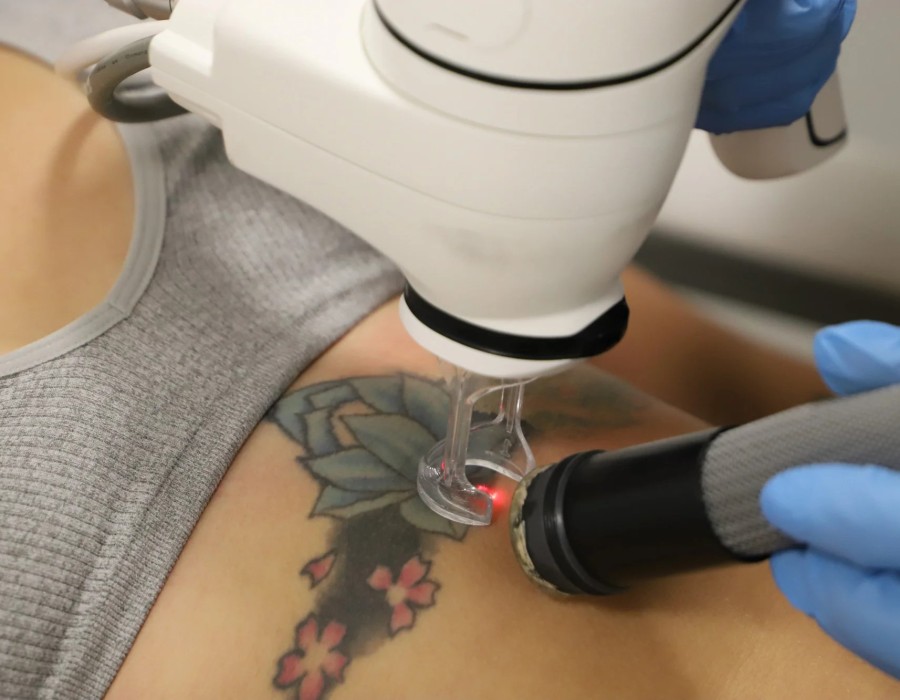Tattoos have long been celebrated as forms of self-expression, art, and individuality. However, as tastes change and life circumstances evolve, many individuals find themselves seeking to remove tattoos that no longer hold meaning for them. One of the most effective methods for tattoo removal is laser treatment, a process that has gained popularity for its efficiency and safety. This article explores the intricacies of laser tattoo removal, especially in the context of Tattoo Removal in Dubai.
Understanding the Tattoo Removal Process
The Science Behind Laser Tattoo Removal
Laser tattoo removal utilizes advanced technology to break down the ink particles embedded in the skin. When the laser is directed at the tattoo, the intense light energy is absorbed by the ink, causing it to fragment into smaller particles. This process allows the body’s immune system to gradually eliminate the ink through natural metabolic processes. Different types of lasers are used depending on the color and depth of the tattoo.
Types of Lasers Used
Several types of lasers are commonly used in tattoo removal. Each type targets specific colors and depths of ink:
- Q-Switched Lasers: These are the most widely used lasers for tattoo removal. They emit short bursts of high energy, effectively targeting different ink colors without damaging surrounding tissue.
- Pico Lasers: A more advanced technology, pico lasers can deliver energy in picoseconds. This allows for more efficient ink removal and often results in fewer sessions and less discomfort.
- Alexandrite Lasers: This type is effective for green and black inks. It has a longer wavelength, making it suitable for deeper ink penetration.
- Nd
- Lasers: These are versatile and can treat a variety of ink colors. They are particularly effective for darker inks and are often used for multi-colored tattoos.
The Treatment Sessions
Typically, multiple treatment sessions are required to achieve optimal results. During the initial consultation, a specialist will evaluate the tattoo, discuss the expected number of sessions, and create a personalized treatment plan. Sessions are usually spaced 4 to 8 weeks apart to allow the skin to heal and the body to remove the ink effectively.
Preparing for Laser Tattoo Removal
Consultation with a Specialist
Before beginning the removal process, it is crucial to consult with a qualified dermatologist or a licensed practitioner experienced in laser treatments. They will assess the tattoo, skin type, and overall health to determine the best approach. During the consultation, patients should disclose any medical history, including skin conditions and allergies, to ensure safe treatment.
Post-Session Care
Post-treatment care is essential for optimal healing and results. After each session, the treated area may appear red or swollen. Practitioners typically recommend the following care guidelines:
- Keep the area clean and dry.
- Apply prescribed ointments to promote healing.
- Avoid sun exposure and use sunscreen if necessary.
- Refrain from picking at scabs or blisters that may form.
Benefits of Laser Tattoo Removal
Precision and Safety
One of the primary advantages of laser tattoo removal is its precision. The targeted laser light minimizes damage to surrounding skin, reducing the risk of scarring. Additionally, modern laser technology is designed to adapt to various skin types and tattoo characteristics, making the process safe for a broader range of patients.
Minimal Downtime
Unlike surgical removal methods, laser tattoo removal requires minimal downtime. Most patients can resume their regular activities shortly after treatment. The quick recovery time is particularly appealing for individuals with busy lifestyles.
Effective for Various Ink Colors
Laser tattoo removal is effective on a wide range of ink colors, which can be challenging for other removal methods. The ability to target specific colors allows for a more tailored approach, increasing the chances of successful ink removal.
Challenges and Considerations
Pain and Discomfort
While laser tattoo removal is generally well-tolerated, some patients may experience discomfort during the procedure. Most practitioners use topical anesthetics to minimize pain. The sensation is often described as similar to the feeling of a rubber band snapping against the skin.
Risk of Scarring and Skin Changes
Though the risk is minimal, some patients may experience changes in skin texture or pigmentation after treatment. It is crucial to follow post-care instructions and consult with the practitioner if any unusual symptoms occur.
Cost and Accessibility
In Dubai, the cost of laser tattoo removal can vary significantly based on factors such as tattoo size, color, and the number of sessions required. While some clinics offer competitive rates, it is essential to prioritize quality and safety over cost. Researching and selecting a reputable clinic is vital to ensure effective and safe treatment.
The Future of Tattoo Removal
As technology continues to advance, the future of laser tattoo removal looks promising. Newer laser systems are being developed to enhance efficiency and comfort further. Additionally, there are ongoing studies exploring alternative methods for tattoo removal, which could offer more options for those seeking to erase their ink.
Conclusion
Laser tattoo removal presents an effective path for individuals looking to clear their skin of unwanted tattoos. With its precision, minimal downtime, and adaptability to various ink colors, it has become a preferred choice for many. In Dubai, as the demand for tattoo removal services continues to rise, seeking treatment from qualified professionals is essential. Whether for personal reasons or lifestyle changes, the journey to clear skin again is entirely achievable through modern laser technology




.jpg)

Comments